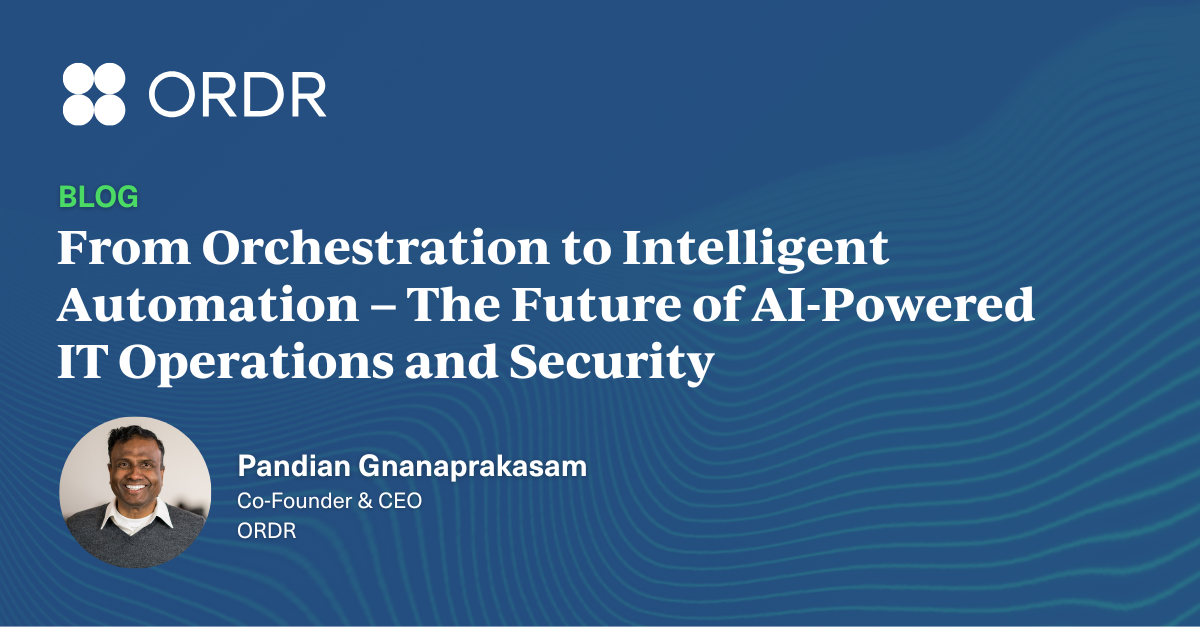CAASM+ DIfferentiators Series: Ordr’s Advanced Deduplication and Data Integrity Features are Vital to a Successful CAASM Strategy
In the ever-evolving landscape of cybersecurity, the need for an innovative and effective Cyber Asset Attack Surface Management (CAASM) strategy is more critical than ever. And as we navigate the complexities of integrating data from disparate sources to embrace the advantages of CAASM, it’s essential to ensure that cyber asset data is rich, timely, and accurate. That requires a data integrity program supported by complete asset visibility and real-time data ingestion, and I am excited to share with you how Ordr is leading the charge in enhancing data integrity through our advanced deduplication and data correlation methodologies.
Data integration within CAASM platforms is like assembling a jigsaw puzzle, where each piece comes from different puzzle sets. We have noticed that, without a coherent strategy, this results in a fragmented understanding of the cyber asset landscape akin to tunnel vision. Each tool in an organization’s arsenal only offers a glimpse into the assets within its scope. True asset visibility can only be accomplished by performing aggregation, normalization, mapping, and correlation to this data using GenAI organizational methods.
The Duplicates and Ephemeral Device Conundrum
One particularly challenging aspect of CAASM is managing duplicated data in situations such as IP rotation, MAC randomization, multiple adapters, etc. Ephemeral tech apparitions could be anything from virtual machines to IoT gadgets—ubiquitous yet elusive. These devices come through VPNs, get spun up as VDIs, etc., as they fit in and out of corporate networks. That makes acquiring and managing an accurate asset inventory a Herculean task using traditional approaches and tools.
That is because traditional asset discovery methods are like using a net with oversized holes: they simply cannot catch these quicksilver-like devices. For however long they are active in the network they have an effect on operations and risk calculus, opening a window to incidents and threats. And so, while invaluable for monitoring more persistent assets, agent-based and other asset management solutions often fail with ephemeral devices that avoid consistent network connections.
Ordr’s Unique Approach to Dynamic Asset Discovery
At Ordr, we’ve developed dynamic asset discovery mechanisms that embrace the transient nature of duplicate and ephemeral devices that is endemic to network operations today. Our approach involves leveraging real-time monitoring technologies and anomaly detection algorithms to spot these elusive assets based on their behavior.
Enhanced network visibility is also crucial. We provide additional insights into device activity by incorporating contextual real-time activity from network sources and endpoint telemetry. This contextual intelligence is pivotal in differentiating between legitimate devices and transient entities. Moreover, we utilize machine learning algorithms to sift through network-based real-time data ingestion, seeking out anomalous patterns that might signal an ephemeral device. These models, honed on historical data, enhance detection accuracy and minimize false positives.
Ordr’s AI/ML Deduplication
Addressing errors related to manual data entry and data duplication is another perpetual challenge in data management. Given the speed and volume of data creation and change, there is no practical reason to rely on manual data entry today, and yet it remains. At Ordr, we recognize that duplicated data is not just a nuisance—it can be a significant obstacle in business operations and security triaging.
What sets Ordr apart is our innovative use of AI and ML in deduplication. Our advanced machine learning techniques, along with predictive large language models, classify devices within an extensive asset knowledge base. We organize devices into an “Asset Catalog” with a sophisticated hierarchical structure, from buckets to categories, sub-categories, profiles, and device instances, along with business/owner context such as who is using the asset.
This organizational prowess and our learning engine’s precise identification capabilities significantly enhance our deduplication algorithm. We developed the vast Ordr Data Lake with rich profiles on millions of crowd-sourced individual assets, informed by data from manufacturers and other authoritative sources, which aids in the comprehensive understanding of device identities.
The Importance of Data Preprocessing
Our strategy hinges on establishing each device’s “true identity” through globally unique identifiers. This foundational understanding is essential for effective deduplication and provides the context to prevent erroneous duplicates.
Every integration at Ordr undergoes a rigorous mapping process to ensure incoming attributes are normalized, mapped and represented within our central database. This preprocessing is vital for maintaining data quality and consistency, forming our subsequent analysis’s bedrock. These innovative strategies that address the nuances of our digital ecosystem pave the path to robust CAASM. And we tirelessly refine our methodologies to ensure that our enterprise customers have a reliable, single source of truth for their asset management needs.
The Road Ahead
I hope this blog clarifies the importance of sophisticated data management within CAASM and how Ordr is at the forefront of tackling these challenges. Our mission is to empower organizations with the tools to manage their assets effectively, ensuring security and operational efficiency in an increasingly complex cyber landscape with an expanding attack surface.
As we look to the future, we remain committed to continuously improving our platform and ensuring that it remains at the forefront of the fight against cyber threats. Thank you for joining us on this journey as we redefine the standards of CAASM and pave the way for a more secure digital world.

Interested in
Learning More?
Subscribe today to stay informed and get
regular updates from ORDR Cloud



